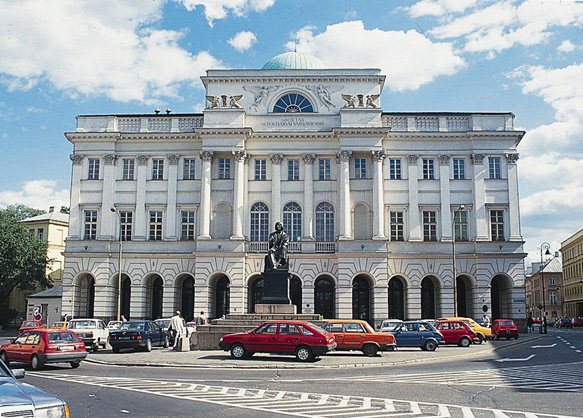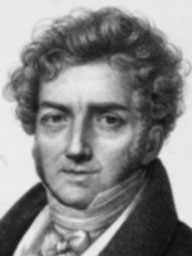Antonio Corazzi
Antonio Corazzi ( born December 17, 1792 in Livorno, † April 26, 1877 in Florence) was an Italian- Polish architect of classicism.
In 1811 he joined the Regia Accademia delle Belle Arti del Disegno in Florence, where he studied architecture with a scholarship of his native city. With Giuseppe Del Rosso, the architecture faculty of the Academy, he was involved in the planning of the Arena Goldoni in Florence, which was inaugurated in the spring of 1818. This year, he was invited on the advice of Stanisław Staszic after Congress Poland, where he worked for 27 years and especially the cityscape of Warsaw had a substantial impact. He was inspired in his work by the Warsaw classicism of the age of Stanisław August.
Its construction in Poland (1819-1847) can be divided into two sections. The years before the November Uprising in 1830 can be attributed to the era of mature Warsaw neoclassicism, while the years have been characterized since 1830 by the architecture of Romanticism. For Corazzi especially the former epoch is characteristic in which he created under the auspices of Franciszek Ksawery Drucki - Lubecki. In this case, it also influenced the impressions of a journey that led him in 1826 to Berlin, Dresden, Munich, Milan, Florence, Bologna and Venice. Since Corazzi was a supporter of the national movement, he became increasingly excluded from important tasks and limited its jurisdiction in public construction projects, under reduction of his annual salary to the school district of Warsaw.
Corazzi realized in Poland over 50 own projects, of which 45 in Warsaw alone as well as some urban projects such as the design of the spaces Theatre Square and banking center, and the cemetery Koszyki. He knew how to combine the exquisite Tuscan architecture and Polish tradition. His main work is the Great Theatre in Warsaw, the largest of its time around the world.
In 1846 he left Poland and moved to Florence, but had to struggle with economic difficulties, since the small pension that he, the Polish government had conceded, was not sufficient for the growing family, and it was not possible Corazzi, as an architect against the numerous enforce competition, especially since he lacked because of his long absence in Poland the necessary relations with the political class in Tuscany.
Important projects
- Conversion of chapel to the Immaculate Conception of the Blessed Virgin Mary ( 1819)
- Staszic Palace (1820-1823)
- Hołowczyc Palace ( 1820)
- Palace of the Commission of the Interior ( 1823)
- Palace of Mazovia Commission ( 1824)
- Conversion and extension of Mostowski Palace in the classical style (1823-1824)
- Palace of the Government Commission for income and finance ( 1825)
- Palace of Finance (1825 )
- Dikontbank (1825 )
- The Great Theater (1825-1833)
- The Grammar School (1841 )
- Palace of the Government Commission in Radom (1827 )
- Palais Rastawiecki in Dołhobyczow (1837 )










